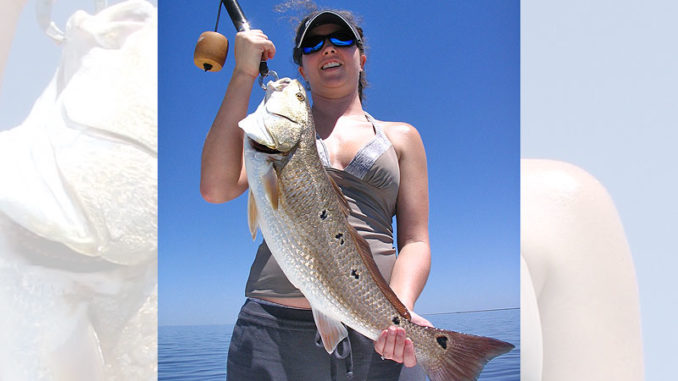
Magnolia state beaches closed, fishermen take a hit-and-miss
The same root cause of the flooding of Mississippi’s South Delta region — a high Mississippi River — has created issues for people on the Gulf Coast, a couple hundred miles to the south, specifically, a blue-green algae bloom that caused coastal beaches to be closed to swimming and brought a warning against eating seafood from affected waters.
“At one point this spring, similar to three of the last five years, we were thinking that releasing river water through Bonnet Carré spillway would benefit our fishing on the Mississippi Coast,” said angler James Carr of Bay St. Louis. “Then, it kept on coming east and became a problem. Later, it became catastrophic, moreso for commercial fishermen and especially the oyster industry. Then came the blue-green algae outbreak, and the coastal waters were closed to swimming and we were warned not to eat fish or seafood from those waters.
“As a recreational fisherman, I first thought we’d see more speckled trout pushed from Pontchartrain and the marsh over our way from Louisiana,” Carr said. “That has happened a lot in recent years, but this year, they’ve kept the spillway running — and with more gates open for a longer time. We’re seeing the downside.
“The trout that resettled in the Mississippi Sound have been either further east toward Alabama or further offshore south of the barrier islands. I’ve been running about 20 miles further than I normally have to go to find fish. At least out there, the blue-green algae isn’t a problem.”
According to scientists, the blue-green algae bloom occurs in water with low-salinity levels, a problem in Mississippi this year due to Bonnet Carré.
Scientists at the University of Southern Mississippi’s Gulf Coast Research Laboratory lay the blame of the toxic algae outbreak squarely on the Bonnet Carré Spillway’s extended use. It has pushed polluted floodwaters from the Mississippi River into the Gulf, feeding an outbreak of cyanobacterium, commonly known as blue-green algae. It can cause rashes, diarrhea and vomiting in humans that contact the algae, leading the Mississippi Department of Environmental Quality to close all beaches on Mississippi’s main shoreline to swimming in late June and early July. The beaches along the barrier islands were not impacted and stayed open.
As you would think, the impact on tourism appears dramatic, although the financial numbers won’t be available for months.
“Eyeballing it, it’s pretty obvious it has hurt bad,” Carr said. “I drove Highway 90 from Waveland east to Pascagoula over the holiday weekend, and you’d see little groups of people here and there on the beaches, but not the hundreds and thousands normally seen over the fourth of July. None of them were in the water. I usually wade-fish off the beaches two or three days a week this time of year, but this year, I have not gone once.
“I’ve done most of my fishing on the south side of the barrier islands, but I started to see (fewer and fewer) fish at Cat Island (the west end of the coast, nearest the source of fresh water) in May and June. I have fished more at Ship and Horn, which requires either trailering my boat over or making longer runs.”
Plenty of fish, but fewer fishermen, Mississippi saltwater guides say
One coastal industry hurt by misinformation about the algae bloom and the freshwater incursion has been charter fishing, but most captains say they’ve never quit catching fish.
“Where we were catching them changed, and what we were catching changed, but the action was always good, just like always,” said Sonny Schindler of Shore Thing Charters of Bay St. Louis. “Freshwater incursion doesn’t affect all species the same. Speckled trout — sure, they are very saltwater conscious, and they will leave when salinity drops. You have to move with them.
“Redfish, not so much. They can tolerate a lot of freshwater. They won’t up and leave, and the Biloxi Marsh, which is south of the algae but closer to the area impacted by (Bonnet Carré spillway), has produced redfish all through this period. Another species that has been consistent is sharks. People like to catch them.”
The big problem, guides agreed, was the what the public knew about the algae bloom. People were slow to book trips, and some cancelled trips already booked due to the warnings about eating fish.
One captain said that the problem was in associating the bloom with the entire Gulf of Mexico, when only the beaches were impacted.
“We don’t fish the beach lines,” Clay Necaise of OutKast Charters told The Clarion-Ledger. “We go out 20 miles to catch fish, and I’m not seeing any (algae) out there.”